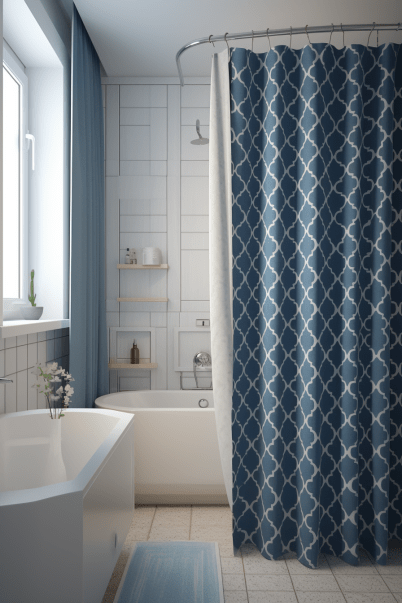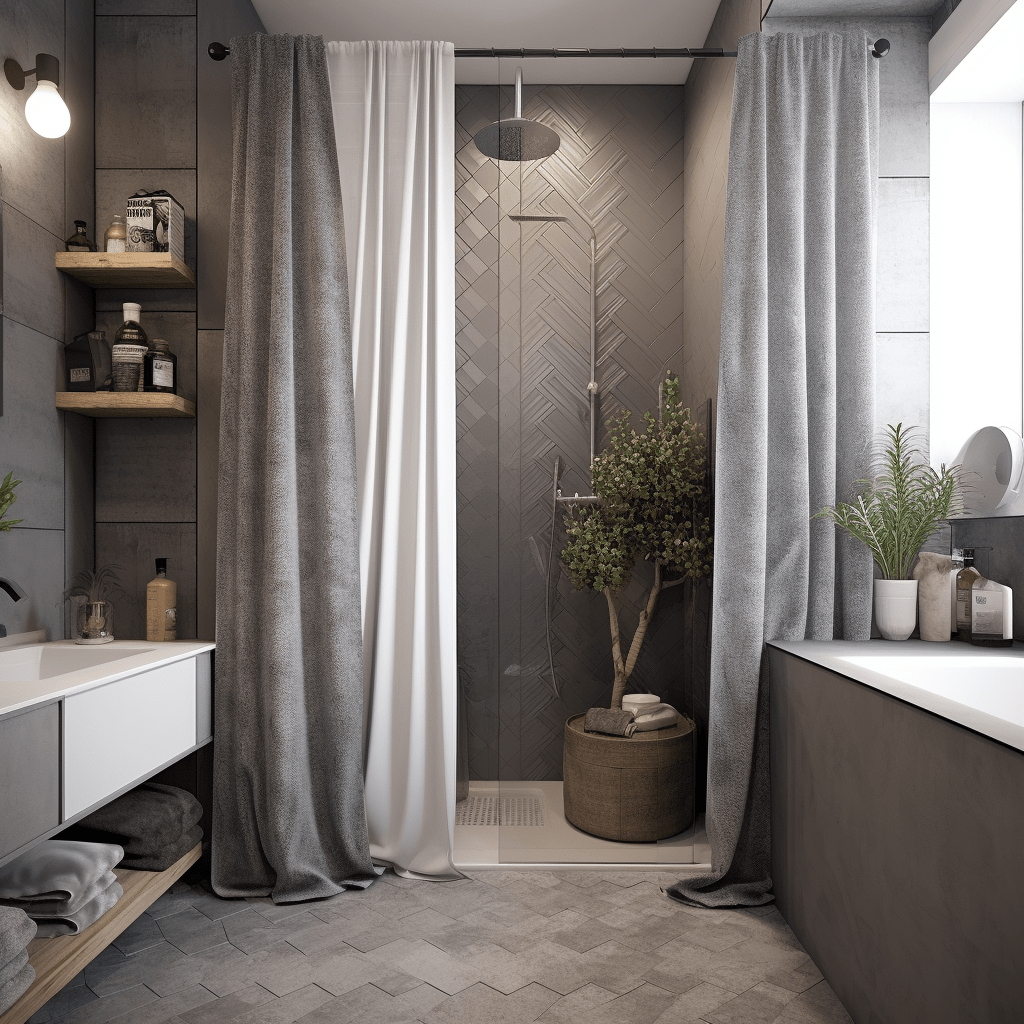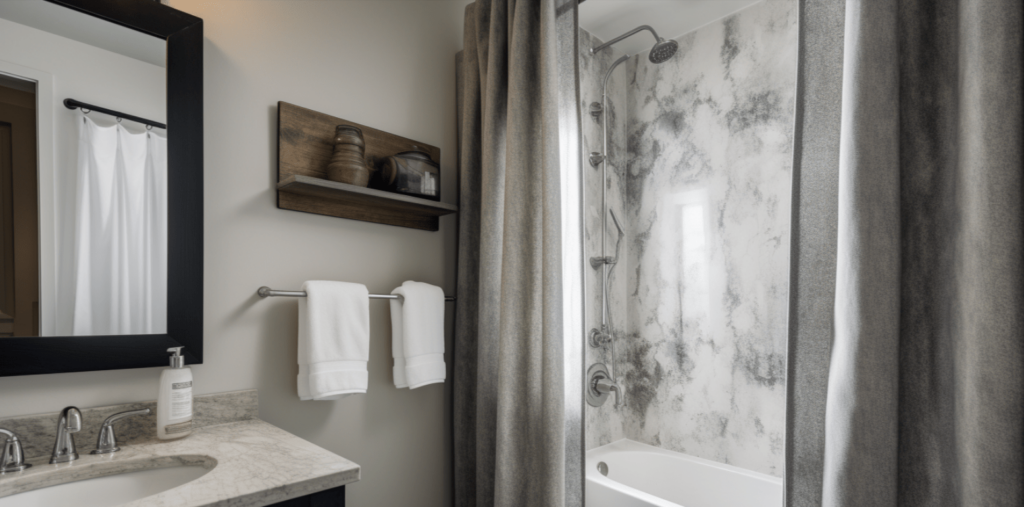There’s nothing like stepping into a puddle of water on your bathroom floor after a relaxing shower. Not only can it be a slipping hazard, but it’s also an unnecessary mess that can damage your flooring over time. The main culprit behind this issue is often water leaking outside of the shower curtain. In this guide, we’ll provide you with effective solutions to prevent water leakage and maintain a dry, safe, and clean bathroom.
Understanding Your Shower
Before we dive into the specific solutions, it’s crucial to understand the type of shower you have in your bathroom. Primarily, there are two types of showers: traditional showers and doorless, or walk-in, showers.
Traditional showers are typically combined with a bathtub or have a standalone stall, enclosed on all sides and sometimes including a small step or curb to contain water. They generally use a shower curtain to prevent water from splashing outside the shower area.
On the other hand, doorless or walk-in showers are trending in modern bathrooms due to their seamless design and easy accessibility. These showers are usually open, without doors, and use a combination of strategic showerhead placement, water barriers, and gradient design to contain water.
Knowing the type of shower you have is essential, as each type has different features that impact how you’ll address water leakage issues. The solutions and strategies that work for a traditional shower might not be the same for a doorless shower, and vice versa.
How to Prevent Water Leakage in Traditional Showers

Selection of the Right Shower Curtain and Liner
When it comes to traditional showers, the first line of defense against water leakage is the shower curtain. Ensuring you select the right size and material can make a significant difference. Your shower curtain should be wide enough to cover the entire length of your shower or tub and long enough to extend inside the shower area.
In terms of material, vinyl and polyester curtains are popular choices due to their inherent water-resistance. If you prefer a fabric curtain for aesthetic reasons, consider pairing it with a water-resistant liner for added protection against water escape.
Correct Installation of the Shower Curtain
Even the most well-chosen curtain won’t be much help if not installed properly. The key is to ensure that the curtain is positioned inside the bathtub or shower pan, not on the edge or outside of it. During showers, ensure the curtain is fully closed to prevent any gaps where water can escape.
Use of Shower Curtain Weights and Magnets
Weights and magnets can be a valuable addition to your water-preventing strategy. By keeping the bottom of your shower curtain in place, they minimize billowing and reduce the chances of water splashing out. They come in a variety of styles, from clear and subtle to decorative, adding a touch of personality to your bathroom.
How to Prevent Water Leakage in Doorless (Walk-in) Showers

Optimal Shower Head Positioning and Selection
For doorless showers, the positioning of the showerhead plays a vital role in water containment. Ideally, the showerhead should be directed away from the open side of the shower and towards tiled walls or fixed panels. Handheld showerheads or rain showerheads are excellent choices as they create less splash compared to conventional models.
Use of Water Barriers
Water barriers such as shower screens, glass panels, shower dams, or even shower curtains specifically made for walk-in-showers are effective ways to contain water in a doorless shower. Shower screens and panels help deflect water back into the shower area while maintaining the open feel of the space. Shower dams or thresholds, although a bit more obtrusive, provide a physical barrier that stops water from exiting the shower area.
Importance of Correct Sloping
In a doorless shower, the correct floor gradient or slope ensures water flows towards the drain, not towards your bathroom floor. If you notice water pooling or flowing in the wrong direction, it might be time to have a professional check the slope of your shower floor. A simple adjustment can make a significant difference in preventing water leakage.
Regular Maintenance and Quick Repairs
Neglecting regular maintenance and delaying necessary repairs can result in water leakage from your shower area. For traditional showers, ensure your shower curtain and liner are clean and free from mildew, as this can make them less effective. Replace them when they start to show signs of wear or damage.
In the case of doorless showers, it’s essential to regularly check the state of your water barriers and floor slope. If you notice that water is pooling or leaking, consider getting your bathroom floor or water barriers professionally inspected and repaired as necessary.
Conclusion
Maintaining a dry bathroom floor isn’t just about keeping your space clean; it’s also a crucial part of ensuring safety and prolonging the lifespan of your flooring as well. Remember, sometimes the simplest measures can have the biggest impact. Regular maintenance, appropriate selection and installation of shower curtains, and strategic design considerations for doorless showers can go a long way in ensuring a dry, safe, and comfortable bathroom.

Colby Armstrong
Colby Armstrong, born and raised in Vermont, is an inventive designer who developed a fascination for interior design and color coordination from a young age, influenced by his home decorator parents. An ardent hiker and nature enthusiast, Armstrong draws inspiration from natural elements and colors, incorporating them into his unique shower curtain designs.

